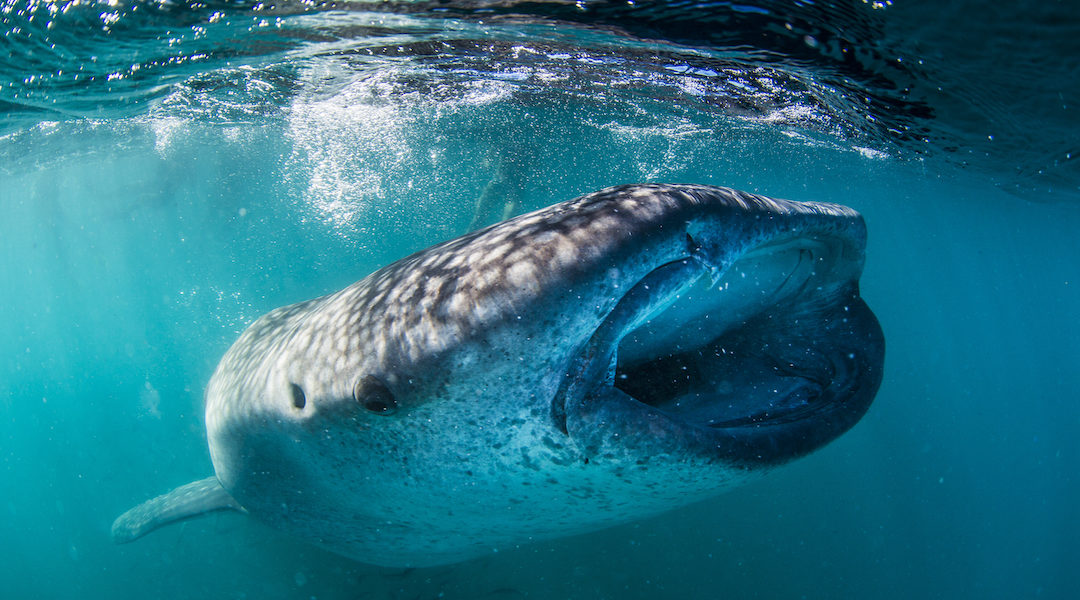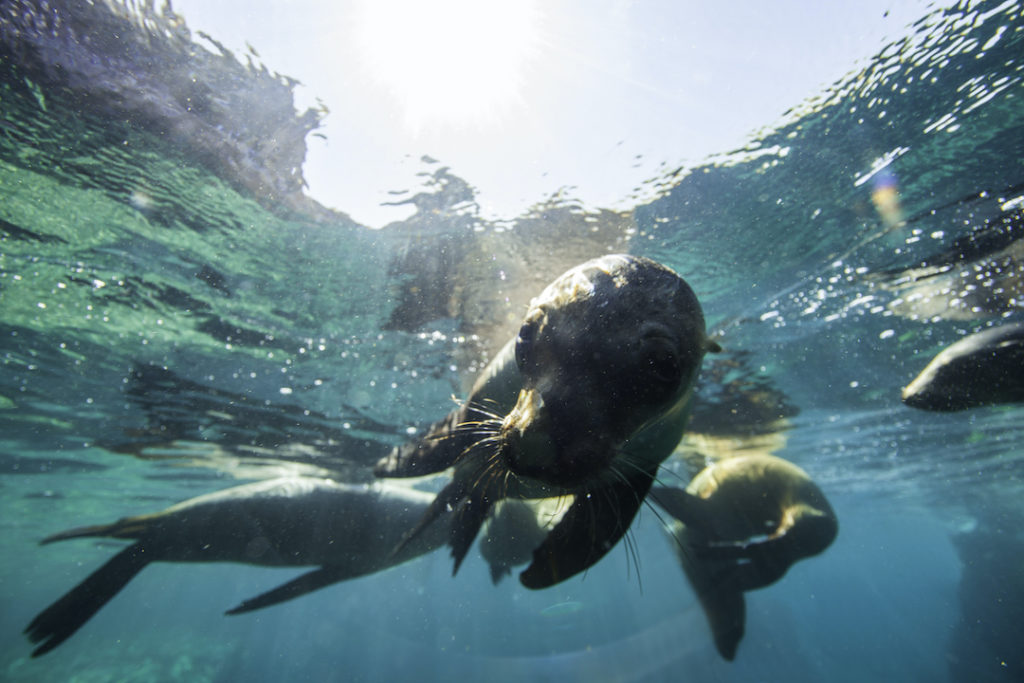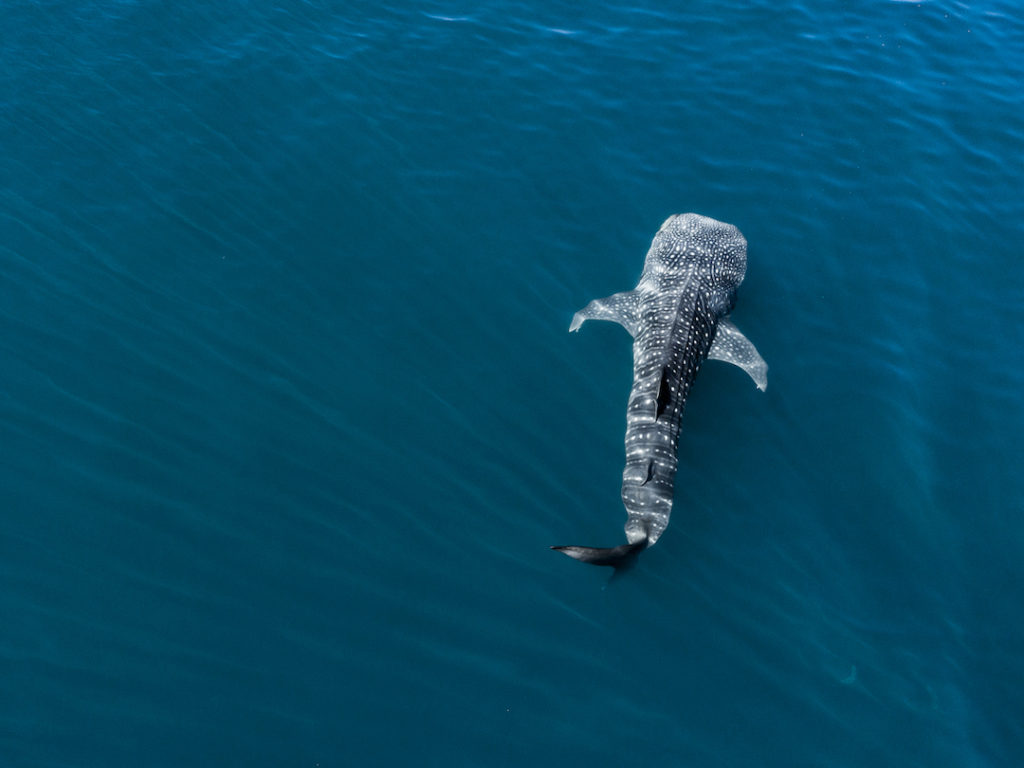
Yes, You Can Swim with Whale Sharks in the Bay Jacques Cousteau Called ‘The World’s Aquarium’
Close encounters with gentle giants are absolutely awe-inspiring, and can be done consciously at this UNESCO World Heritage site.

Courtesy of Go La Paz
Growing up in the West, I never had a shortage of opportunities to explore the sea, from rough-water swimming to bodyboarding to one of my all-time favorite ocean activities, snorkeling. I have a real appreciation for the relative accessibility of grabbing some affordable gear, sticking my head underwater, and entering another world, no oxygen tanks required. Exhibit A: the Bay of La Paz in Baja California Sur.
The biodiversity in this coastal region is so rich and so spectacular that Jacques Cousteau referred to it as the “world’s aquarium.” Lesser-known and far less touristed than Cabo San Lucas two hours south, La Paz makes an incredible journey for nature lovers.

Courtesy of Go La Paz
La Paz, an hour’s drive from trendy Todos Santos, is the capital city of Baja California Sur and the gateway to the Sea of Cortez. Just offshore, the warm waters near Espiritu Santo Island (a UNESCO World Heritage site) teem with playful sea lions, manta and mobula rays, giant squid, dolphins, and Baja’s most famous underwater resident: the whale shark.
Whale sharks, or tiburón ballena as they’re known here, are the largest living non-mammalian vertebrate and largest shark species on the planet. They can reach up to 41.5 feet long and weigh about 47,000 pounds. Swimming alongside them is the most heart-racing, awe-inspiring experience I have ever had, on land or in the sea.
Cruising with these gentle giants as they move slowly and gracefully in the azure waters while they filter feed on the plankton-rich waters completely dwarfed my sense of self in the grand scope of nature, inspiring a further responsibility to protect these magnificent creatures.
Because whale sharks thrive and feed in shallow waters in the Bay of La Paz, visiting them as a snorkeler is relatively easy. Here they are cherished by visitors and locals alike, but in other areas of their international migratory patterns, their shallow feeding habits has given easy access to poachers who covet their meat and fins, landing them on the list of endangered species.

Courtesy of Go La Paz
Thankfully, La Paz as a community has taken measures to be at the forefront of whale shark protection and conservation. Tour operators have to be fully certified, and many guides are educated as marine biologists. Cousteau wasn’t the only one to take note of its unique biodiversity; La Paz is home to four marine research centers and several NGOs working towards protecting the Bay’s spectacular ecosystem. The area where the whale sharks feed is strictly regulated by the Natural Protected Areas National Commission, and only permitted operators are allowed in.
“For the communities in La Paz, whale sharks not only represent an important part of the ecosystem, but their arrival each year also brings tourism that benefits thousands of families. In order to guarantee the sustainable development of the region, it is crucial to protect these giants of the sea and their habitat,” says Luis Garduno, co-founder of RED Travel, a company dedicated to responsible eco-tourism in Mexico. “Authorities, scientists, and tour operators have been working largely on achieving this balance. Of course there is always room for improvement, but I believe interacting with wildlife in a restricted and protected manner has been one of the most important efforts in Mexico.”
Before we embarked on our snorkel, we had an in-depth briefing that went over the rules: Swimmers aren’t allowed to approach from the front, and are absolutely not permitted to touch the whale sharks. There is no baiting involved, and the encounters are purely passive.
In season, a maximum of 14 tour boats are allowed to look for whale sharks. The excursions can go no longer than two and half hours, with no more than two boats following any one shark. A total of five guests and one guide can be in the water at any given time. On our early morning trip, we were the only folks I saw out on the water, making for a truly magical experience and proving that the planet’s largest creatures are worth protecting.
Where to Stay on Your Trip:

Kenny Viese
Rancho Pescadero
Located in the trendy beach town of Todos Santos, less than an hour and a half outside La Paz, this newly revamped wellness retreat is a vacation in and of itself. Unwind after a day out on the water in the 30,000-square-foot spa.

© Rory Gardiner/Courtesy of Grupo Habita
Baja Club Hotel
We’re a bit obsessed with the exposed-brick courtyard that surrounds the pool at this revamped 20th-century villa. Rustic, minimalist interiors are accented by pieces from local craftsmen, and did we mention the rooftop bar?

Drift Hotel San Jose del Cabo
Drift Hotel
Even if you are staying in San Jose del Cabo, La Paz is just a quick two-and-a-half-hour drive away and well worth a visit. This stylish boutique hotel is a local favorite and one of ours, too, because of its proximity to nearby activities, like the weekly art walk.
Read the Current Issue Here!
Get one year of Sunset—and all kinds of bonuses—for just $29.95. Subscribe now!
